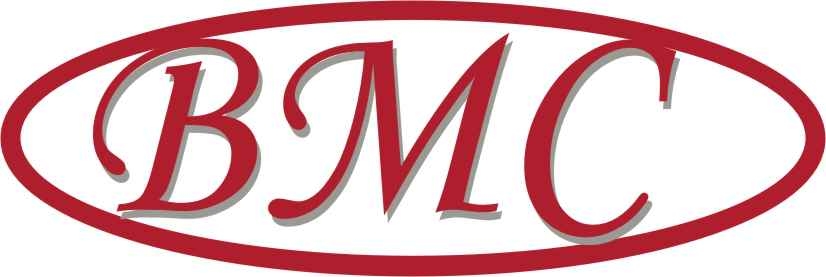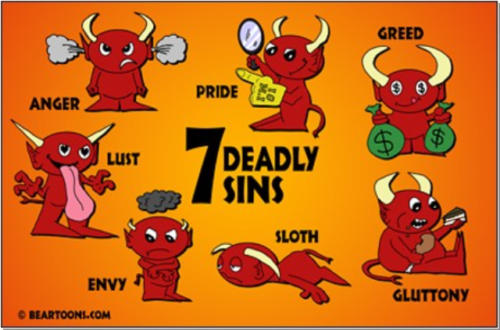Proven Ways to Make the Media Gods Angry – the Seven Deadly Sin of Press Releases
I didn’t always know about the seven deadly sins of press releases, but I’m a trained journalist and a quick study. Years ago, I met with the editor of a small-town weekly newspaper in rural Tennessee; he was a genial old gent who inexplicably took a liking to me, and showed me something most PR people never got to see. Next to his desk, he kept an empty 55-gallon oil drum. “Each week I fill this to the brim with press release I don’t want and couldn’t use even if I did want them,” he said, proud of the solution he’d evolved. “Each Friday I empty it out, and each Monday I start filling it again.”
I got the message.
But I didn’t really start feeling his pain until I began editing a trade journal, Nevada’s Construction Zone for a client who used this publication as the basis for positioning themselves within the local construction industry. While their intent was sales support, my mission was to produce and publish a fully-credible, journalistically-sound 28-page news magazine for the publication’s construction business owner audience.
Once word got out that I was editor, I started receiving an ever-increasing tidal wave of inappropriate, useless and occasionally offensive press releases (and occasionally a few useful ones) – and learned from the other side a few things about what works – as well as what manifestly doesn’t work.
From this, I have evolved what I call the Seven Deadly Sins of Press Releases, a series of quick-and-easy mistakes that will all but destroy any chances you’ve got to obtain coverage.
First Deadly Sin: Format and Style: Among many other things, a press release ought to be written in acceptable journalistic style, inverted pyramid and all. While some reporters are lazy – all reporters and editors believe they’re overworked, and most of them are right. So a press release that requires rewriting (or worse, retyping) is almost surely dead-on-arrival. A few hints:
Don’t submit it in PDF format: This will likely require retyping, and will be as welcome as a bootlegger at a Baptist tent revival meeting. Make it easy for editors to cut-and-paste it into their publications.
Don’t make it a sales tool: Publications usually sell ads, and editors resent the presumption of PR people who think they can get a “free ad” by putting the material in a press release format.
Do use journalistic style: Make the story stand alone, so if the editor likes it and he’s short on time, he can just drop it in a gaping last-minute news hole.
Do include quotes and attribution – but make the quotes sound real: Newspaper and magazine reporters love quotes, but they won’t sit still for some self-important CEO to pontificate like Dugout Doug MacArthur. The quotes should sound real, and should relay important, useful information that advances the story. Guideline: Facts don’t need attribution, but opinions always need attribution.
Second Deadly Sin: News value: Some material from your client is likely to be newsworthy. Send that out to reporters and editors who can really use it. Other material is just a CEO ego-stroke or a “we’ve always sent out new-hire press releases … it makes the new-hires and their managers feel good” kind of thing. Save that for the employee publication – don’t waste a valuable media contact’s time with worthless junk. Junk tells them you’re not a skilled PR person, you’re not someone who knows the difference between news and self-serving pap … and therefore, you’re not someone with whom they’ll want to invest time.
Third Deadly Sin: Jargon: Jargon comes in two kinds. “Industry Jargon” includes insider terms that mean less than nothing to those who aren’t insiders. “PR Jargon” refers to the use of puffery and cliché instead of thoughtful prose.
Industry jargon. Every industry has its own jargon – no matter how much your client claims that “everybody understands this,” resist the temptation. So, for instance, when a VP of Nursing wants you to talk about “cost containment,” instead of using that term, describe the concept behind it. If a software CEO talks of “end-to-end solutions,” do NOT let that tired old chestnut appear in the release.
PR and Business Jargon and babble-speak. PR has a nearly endless stream of weasel words, puffery and empty (and often palpably false) jargon that populates press releases. Every company is a “leading provider” and every CEO is a brilliant “thought leader.” In reality, they’re not. To this I would add business-babble words: Bleeding Edge. Paradigm Shift. Enterprise-wide. And a thousand more.
Write as if you’re trying to explain this to your mother-in-law – she’s got a Masters in English and is no dummy, but her idea of “business” is what the dog does when she lets him out. Explain the concept so she can understand it – and don’t use babble words or jargon in doing so. Otherwise, you’ll find reporters playing “bullshit bingo” with your press release – laughing their asses off at your efforts, but not using the releases either.
Hype and the Way of the Weasel. Dilbert creator Scott Adams wrote a whole book, “The Way of the Weasel,” that might as well be titled, “how not to do PR in the business world.” Empty hype – “our widget is revolutionary, unique and paradigm-breaking” is worse than saying nothing at all. A lot worse. As our phrases like “up to 50%” or “nearly trouble-free.” Qualifiers like that turn an interesting statement into useless babble. Instead, say “from 33% to 47%” or “in a controlled test, 472 clients required tech support no more than once in a six-month period.” Be specific, be accurate – and be believed.
Fourth Deadly Sin: Tell the truth. The only lie acceptable to PR people is the lie they didn’t tell. Deceive a reporter or editor – even once – and you’re DOA with that individual. Beyond that, journalists have eidetic memories and tell everybody they can think of when they’ve been lied to. It goes with the territory. However, if you accidentally mis-state something, tell the reporters and editors who heard you right away.
Once I was conned by an employer into deceiving two reporters in a matter that involved a state’s “open meeting” or “sunshine” law – not a small matter. After a tortuous two hours (hey, I had a pregnant wife and a mortgage), I called each of them and said, “if you print this, I’m out of a job, but I will not be party to a deception.” Neither of them ran it as a story (it wasn’t really newsworthy), but they watched that employer carefully indeed. And when I changed jobs three months later, these two reporters covered that organization, too – and when they saw me, they knew they could trust me, and damn-near everything I released got used … because they knew I told the truth.
Fifth Deadly Sin: Write for the audience. As editor of Construction Zone, I produce a publication for owners and managers at primarily non-union “light construction” (i.e., home builders) businesses. You’d be amazed at how many releases I get related to unrelated topics – real estate, union news, auctions, products suited for “heavy construction” (at least they’re sort of close) – you get the picture. These tell me two things:
They don’t know my publication or my audience
They don’t care to do their jobs right
PR people who won’t do their jobs find that I won’t do theirs, either. Which leads to my next deadly sin:
Sixth Deadly Sin: Do the reporters’ jobs for them, or they’ll won’t do your job for you. Reporters and editors need facts, quotes, a story hook, illustrations and a host of other things to make any given story work. Provide, for instance, links to downloadable images – from high-rez photos to your clients’ business logos – along with contact information on people quoted in the release. Even if that contact information is “if you’d like to interview the CEO, give me a call and I’ll set it up.” Make sure that an editor who gets your release sees everything he needs, right their before his eyes, and you’ve already got one leg up on the competition.
Seventh Deadly Sin: If you send out a press release, be prepared to follow it up. At Construction Zone, I often get invitations to ground-breakings, dedications and other PR “events” that I don’t have time to attend. However, you might be amazed at the number of times I’ve called to say, “I can’t make it, but I’d like to see a half-dozen high-rez photos, properly captioned. My deadline is …” and not get a reply, or be told “we can’t help you.” Ditto for requests to talk to the person quoted in the release. If I want facts other than those quoted, I want to talk to the source – maybe just for five minutes – but when a PR person tells me that’s not possible, I decide that the release is dead – and so is that PR person.
I’m not sure what they’re teaching in PR Trade School these days, but my experience suggests that “old hands” are quick to go the extra mile to get requested information, while newer-to-the-field PR practitioners are quick to find excuses. This is a gross generalization, of course (and it also positions me – with 35-plus years of PR experience) – squarely in the “old school,” but in fact, you’ll get more coverage by providing what interested reporters need than by explaining to editors why what they request isn’t possible (or at least, isn’t convenient).
Cadet paratroopers are told that there are “31 ways to buy the farm” – 31 ways to kill yourself while trying to do something that thousands of others do routinely every day. In PR, there are at least 31 ways to screw up a press release beyond recovery – these “Seven Deadly Sins” don’t, for instance, cover wire releases, formatting and targeting email blasts, the etiquette of the follow-up call (no matter what, don’t ask, “Did you get my release?”). However, mess up on any of these seven deadly sins and your release – and your credibility with at least one journalist – is DOA. And DOA is not a sound career strategy – nor does it well-serve your client.


Recent Comments